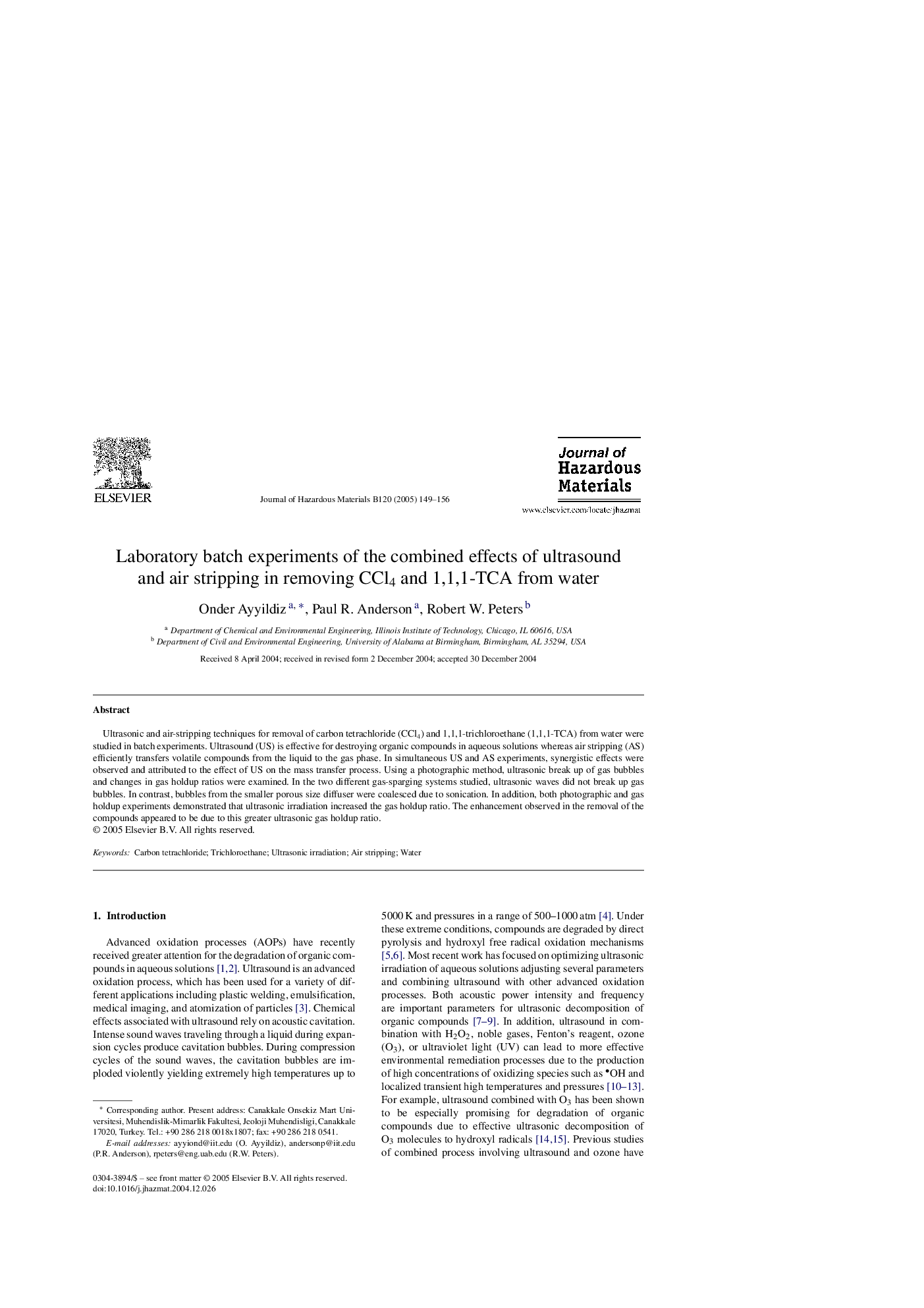| Article ID | Journal | Published Year | Pages | File Type |
|---|---|---|---|---|
| 9674313 | Journal of Hazardous Materials | 2005 | 8 Pages |
Abstract
Ultrasonic and air-stripping techniques for removal of carbon tetrachloride (CCl4) and 1,1,1-trichloroethane (1,1,1-TCA) from water were studied in batch experiments. Ultrasound (US) is effective for destroying organic compounds in aqueous solutions whereas air stripping (AS) efficiently transfers volatile compounds from the liquid to the gas phase. In simultaneous US and AS experiments, synergistic effects were observed and attributed to the effect of US on the mass transfer process. Using a photographic method, ultrasonic break up of gas bubbles and changes in gas holdup ratios were examined. In the two different gas-sparging systems studied, ultrasonic waves did not break up gas bubbles. In contrast, bubbles from the smaller porous size diffuser were coalesced due to sonication. In addition, both photographic and gas holdup experiments demonstrated that ultrasonic irradiation increased the gas holdup ratio. The enhancement observed in the removal of the compounds appeared to be due to this greater ultrasonic gas holdup ratio.
Related Topics
Physical Sciences and Engineering
Chemical Engineering
Chemical Health and Safety
Authors
Onder Ayyildiz, Paul R. Anderson, Robert W. Peters,
